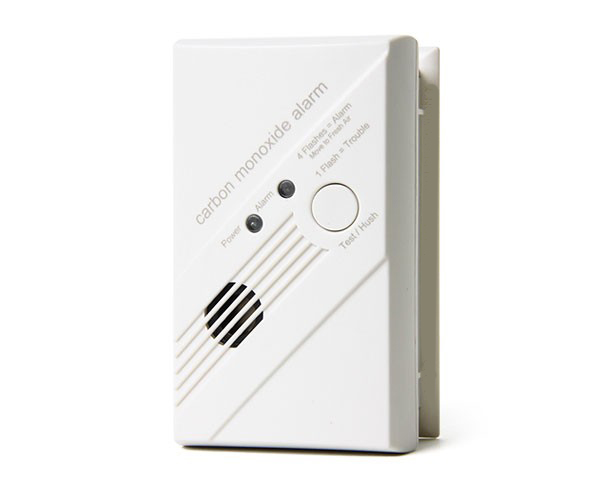
What to Know About Carbon Monoxide Detectors
Carbon monoxide (CO) and the dangers that come with it are something that is, or at least should be, taught early on in the educational system. Many of us have learned or know the basics. “Don’t leave your car running in a closed garage” or “try not to bring the barbeque into your tent when camping” are both pretty obvious precautionary measures. On the other hand, the facts behind carbon monoxide detectors, the devices meant to keep us safe from the deadly colorless, odorless gas aren’t always as obvious.
In the below article, we outline everything you need to know about carbon monoxide detectors from how they work, what to look for when purchasing, and installation tips.
How do carbon monoxide detectors work?
There are three main types of carbon monoxide detectors: metal-oxide detectors, electrolytic detectors, and biomimetic detectors. We won’t get into the technical specifics of how each one works, but if you want, you can read more here. All three, however, respond in similar ways.
As carbon monoxide beings to build up, its presence, if strong enough (approximately 400 parts per million), will trigger an alarm inside the detector. To work properly, most carbon monoxide detectors need nonstop power supply. For these types of detectors, the alarm inside will not work without a back-up battery source when there is no power being directly supplied.
What to look for when buying a carbon monoxide detector.
Carbon monoxide detectors aren’t one of the items that you would usually plan for in your interior decorating project. Matching the polka-dot wallpaper in a home might be a challenge. So, what’s the best practice? Simple. Buy a carbon monoxide detector with a clean, sleek design.
Other than the preferential features that make you happy, there are some other areas you’ll need to evaluate when buying a carbon monoxide detector. Ask these questions before making a purchase:
- Does this detector meet standard safety requirements and testing such as UL 2075 and UL 2034?
- Will surrounding temperature fluctuations affect the sensory system?
- Is there a testing / hush button?
- What type of battery life can be expected?
- What is the life expectancy of the sensor?
- Is there a warranty that will protect me from any defects?
Not only is it important to answer the above questions. It’s also important to look for a company or a sales representative who can further educate you where needed. There may be additional features that you are not aware of. For example, TruWatch CO Detectors have an optional connection to a 24-hour monitoring center to help further secure your home or small business when presence of carbon monoxide is detected.
Installing carbon monoxide detectors.
Proven by Hampson NB, carbon monoxide does not layer on the floor, float or rise in the home. Instead it diffuses until it is at equal concentration. This scientific study suggests that it is actually okay to place a CO Detector at any height of a room contrary to other popular beliefs.
At least one carbon monoxide detector should be placed near the sleeping area. This is a strategic tactic to alert those that are sleeping, a state where symptoms of poisoning often go unnoticed. Consideration should also be given to fuel burning appliances such as stoves, fireplaces and heating systems. Depending on the size of the home or business, an additional detector may be needed to cover these. All detectors should also be clear of any airflow obstructions like furniture or curtains. Lastly, familiarize yourself with any local codes, or building codes. There may be specific guidelines for carbon monoxide detectors and their placement.
Don’t panic, be prepared, respond quick.
Planning and preparation goes a long way. But it does not guarantee your safety from the hazards of carbon monoxide. If your carbon monoxide detector goes off, don’t panic. More importantly, don’t just ignore it—even if you feel healthy.
If and when the alarm does sound, be sure to ventilate your home or business as soon as possible. Open doors and windows and check to make sure that all fuel burning appliances are turned off. Once ventilated, be sure to contact a professional or a technician to inspect sensitive areas to safely resolve the problem.
Each year, more than 400 Americans die from unintentional CO poisoning not linked to fires, more than 20,000 visit the emergency room, and more than 4,000 are hospitalized (Centers for Disease Control & Prevention. Make sure your home has a carbon monoxide detector, and make sure it’s working properly. Contact TruWatch to learn more about our CO Detectors, our home fire safety educational programs, and 24-7 monitoring center.



No Comments